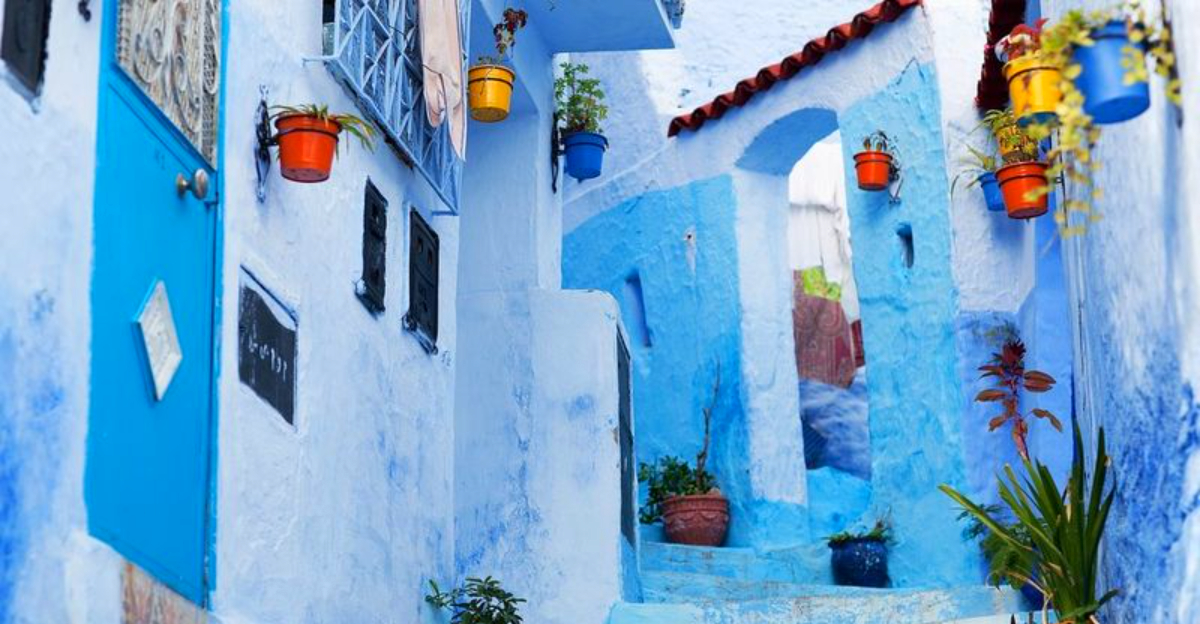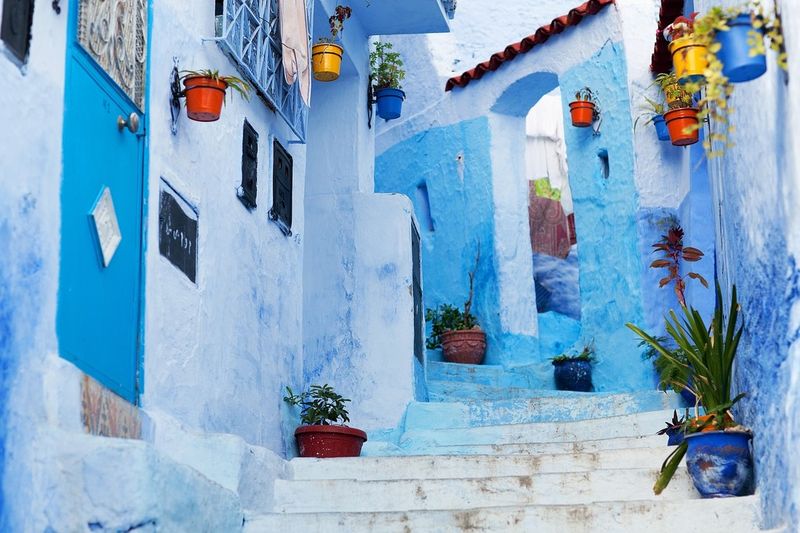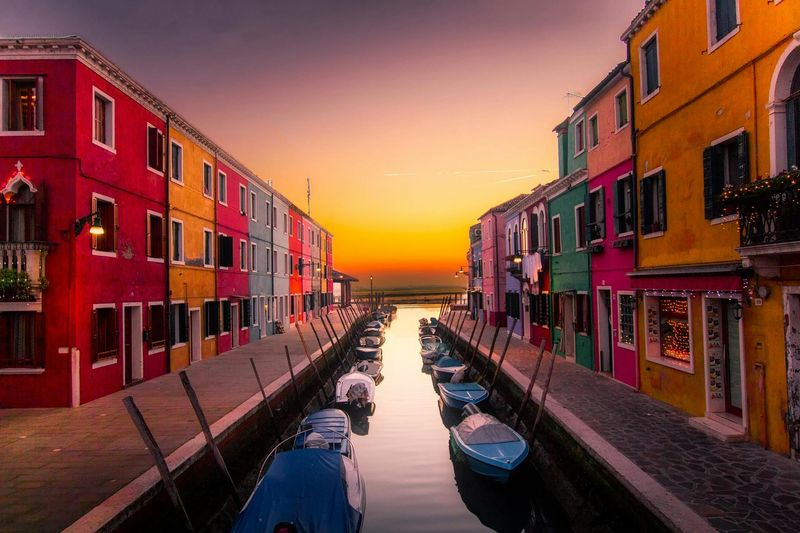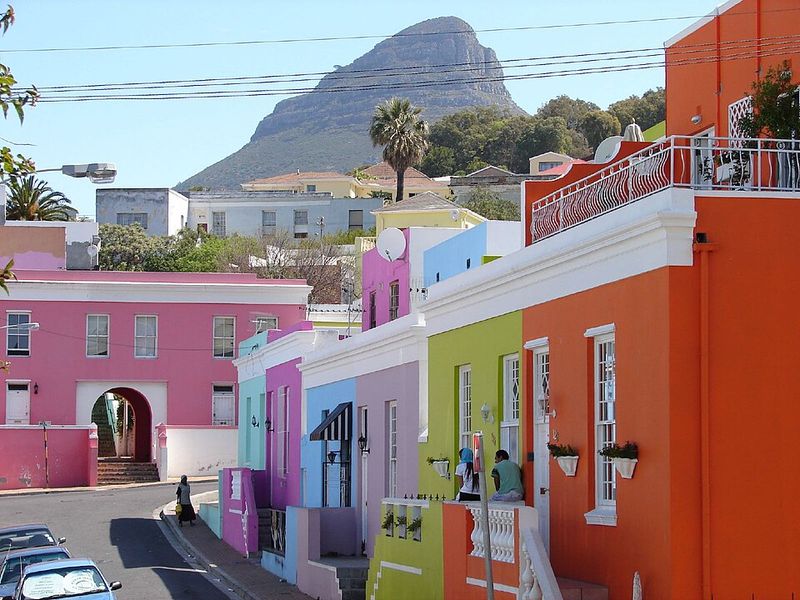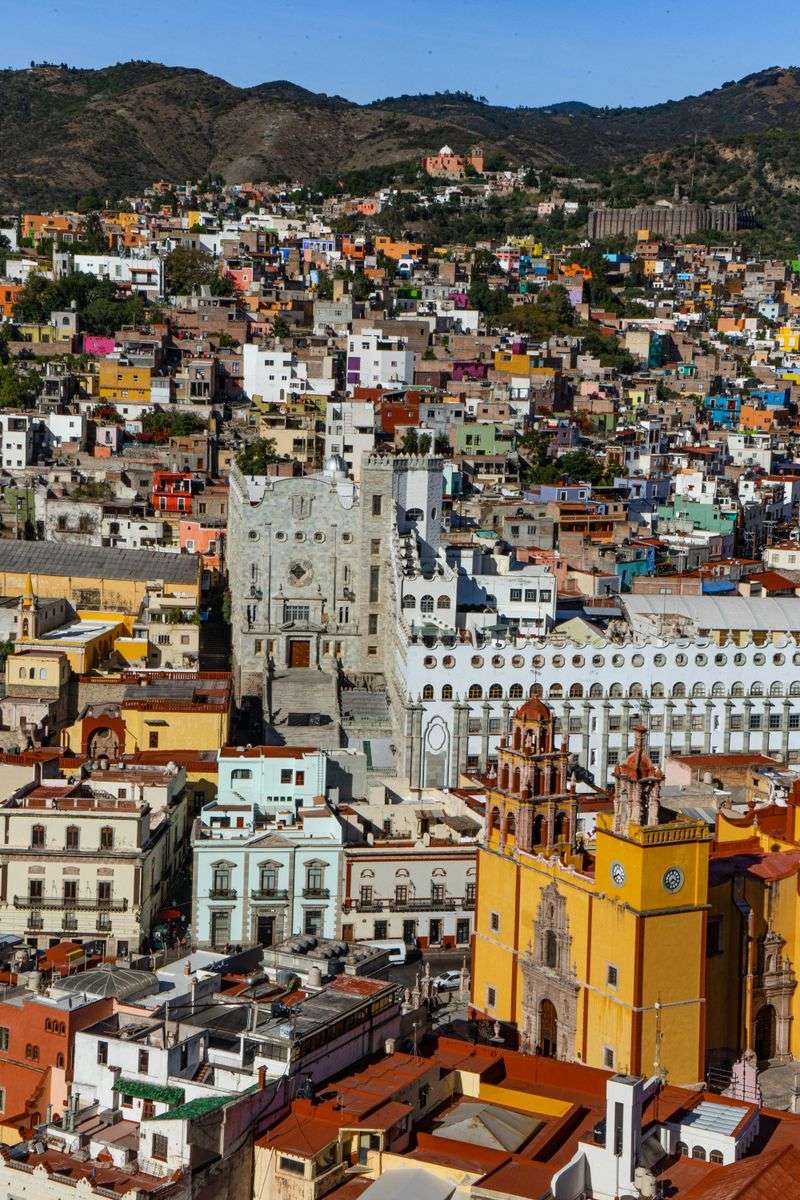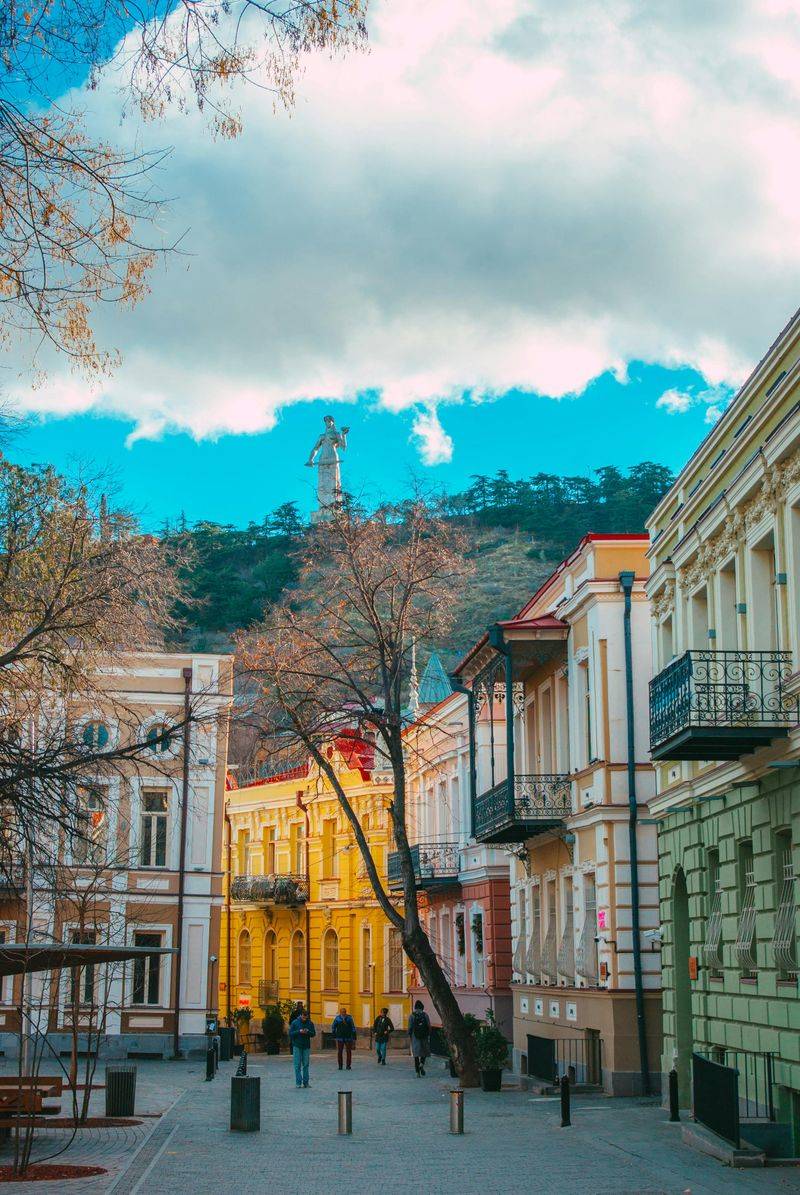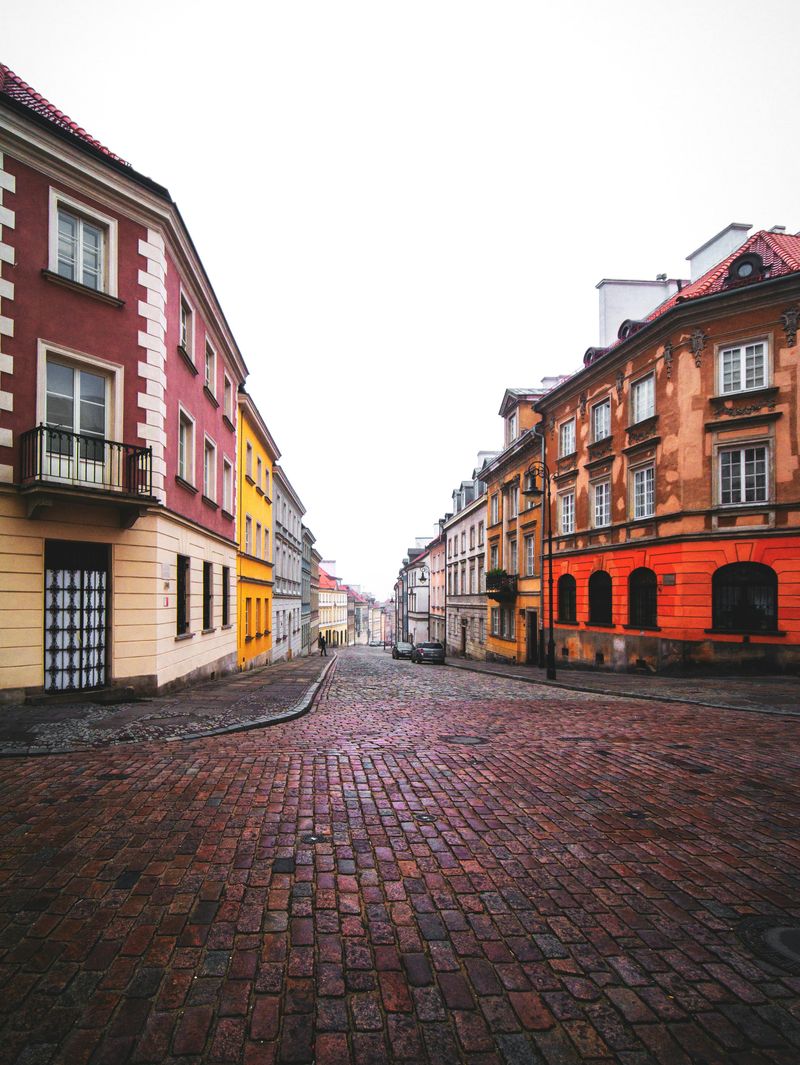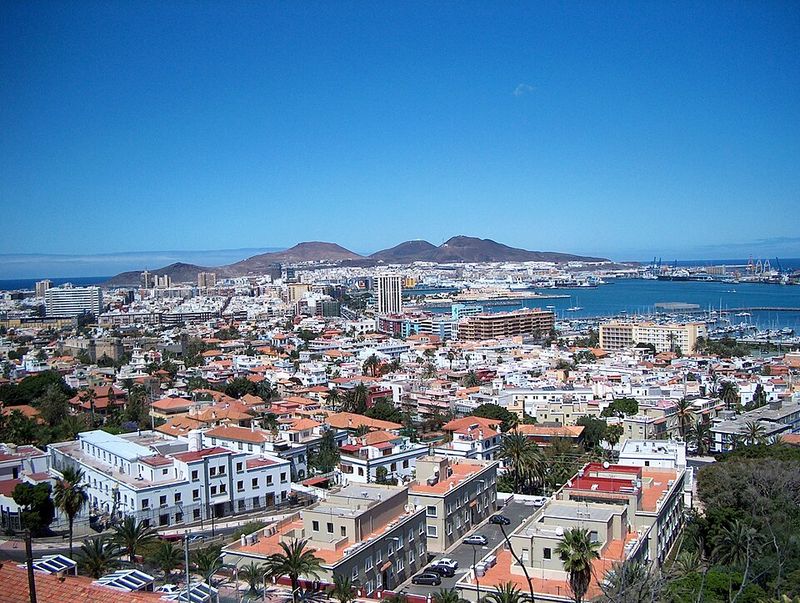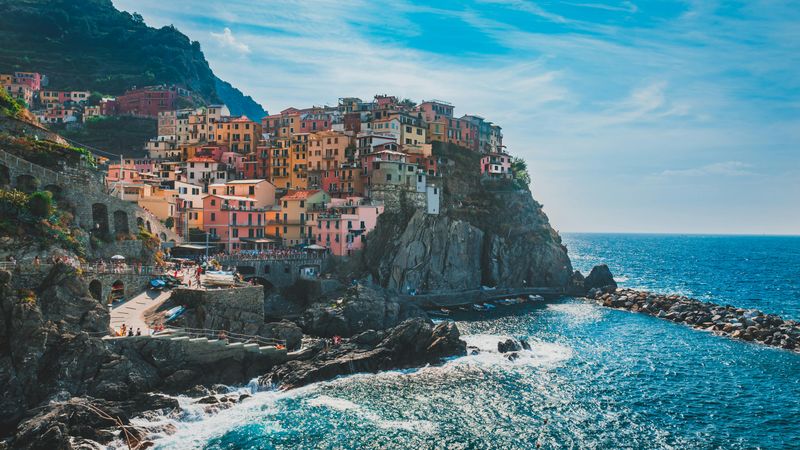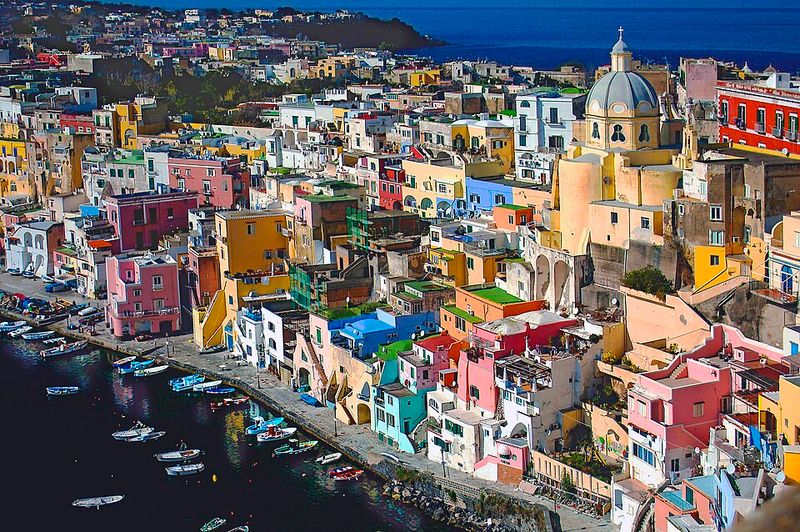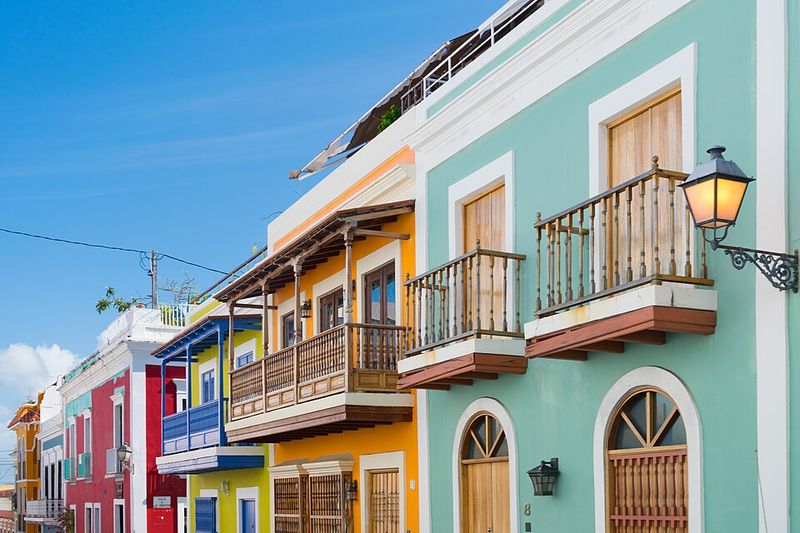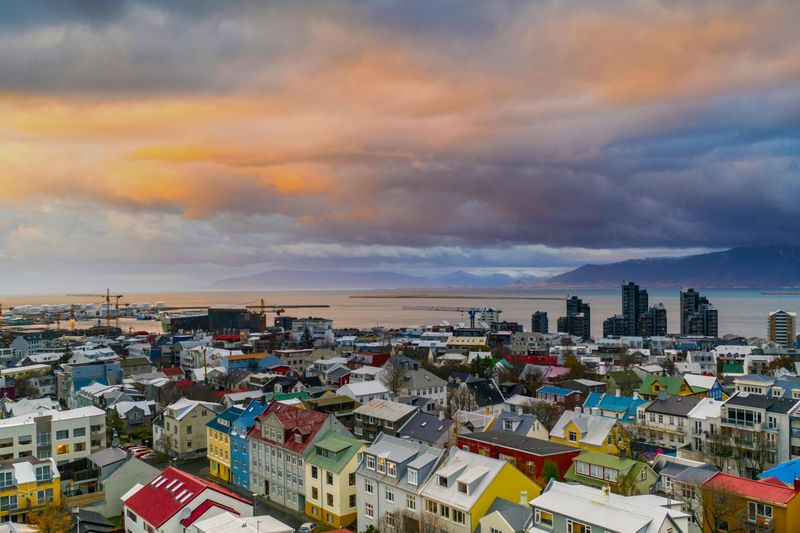Imagine walking through streets where every building tells a story through brilliant blues, sunny yellows, and vibrant pinks. Around the world, certain cities have turned color into an art form, transforming entire neighborhoods into living canvases that celebrate culture, history, and community spirit. These destinations offer more than just pretty pictures—they provide unforgettable experiences where architecture meets tradition in the most spectacular ways.
Chefchaouen, Morocco
Nestled in Morocco’s Rif Mountains, this enchanting town earned its nickname “Blue Pearl” through centuries of tradition. Every wall, doorway, and staircase glows in shades ranging from powder blue to deep indigo, creating an otherworldly atmosphere that photographers dream about. Jewish refugees in the 1930s likely started this custom, though locals continue it today for both spiritual and practical reasons.
Walking these blue-washed streets feels like stepping into a calm, cool oasis. The mountain air stays fresh, and shadows dance across painted surfaces as the sun moves overhead.
Visit local souks where artisans sell handwoven blankets and leather goods. Dawn and dusk offer the most magical lighting, when the blue hues seem to glow from within.
Burano, Italy
A short vaporetto ride from Venice transports you to this fairytale island where candy-colored homes line quiet canals. Legend says fishermen painted their houses in bright hues so they could spot home through thick fog while returning from sea. Today, strict regulations ensure each building maintains its vibrant shade, creating a rainbow effect that doubles beautifully in the water’s reflection.
Burano remains famous for delicate lace-making, a craft passed down through generations of island women. Small shops display intricate tablecloths and handkerchiefs that take months to complete.
Enjoy fresh seafood at waterside trattorias while watching boats glide past painted façades. Every corner presents a new color combination worth capturing.
Bo-Kaap, Cape Town, South Africa
Climbing the slopes of Signal Hill, this historic neighborhood bursts with pride through its rainbow-painted homes. Once known as the Malay Quarter, Bo-Kaap’s residents chose bold colors after apartheid ended, celebrating their freedom and cultural identity through vivid façades. Each cheerful building stands as a testament to resilience and community strength.
Cape Malay culture thrives here, evident in aromatic cooking smells drifting from kitchens and the call to prayer from local mosques. Traditional recipes blend Indonesian, African, and Dutch influences into dishes like bobotie and koesisters.
Join guided walking tours that share stories of families who’ve lived here for generations. Photography walks attract visitors worldwide, though remember these are real homes deserving respect.
Guanajuato, Mexico
Built on impossibly steep terrain, this UNESCO World Heritage city cascades down hillsides in a riot of warm colors. Silver mining wealth during colonial times funded elaborate buildings that locals now paint in bold reds, sunflower yellows, hot pinks, and sky blues. Underground streets originally built for flood control now carry cars beneath the city, leaving plazas peaceful for pedestrians.
Music fills the air constantly, especially during the famous Cervantino Festival when artists from around the globe perform. Student musicians called estudiantinas roam streets in medieval costumes, serenading passersby with traditional songs.
Climb to the Pipila Monument for sweeping views of the colorful cityscape. Theaters, museums, and plazas make culture accessible at every turn.
Tbilisi, Georgia
Where ancient Silk Road history meets cutting-edge nightlife, Tbilisi thrives as a city of contrasts. Carved wooden balconies painted in faded pastels hang from centuries-old buildings, while massive modern murals transform entire walls into artwork. Mosaic tiles decorate unexpected surfaces, and renovated warehouses now house electronic music clubs that rank among Europe’s best.
The café culture here feels both relaxed and energetic, with locals lingering for hours over strong coffee and churchkhela sweets. Sulfur baths that gave the city its name still welcome visitors seeking relaxation in naturally heated waters.
Wander from the historic Narikala Fortress down through colorful neighborhoods where old and new architecture create surprising beauty. Night reveals another dimension as clubs and bars illuminate the creative spirit.
Warsaw, Poland
Rising from near-total destruction after World War II, Warsaw rebuilt its Old Town with remarkable dedication to historical accuracy. Pastel-painted merchant houses now line the market square in soft pinks, yellows, and oranges, looking centuries old despite being reconstructed in the 1950s. This phoenix-like rebirth itself represents hope and resilience painted in cheerful colors.
Modern Warsaw adds another colorful layer through spectacular street art covering apartment buildings throughout Praga and other neighborhoods. International artists create massive murals that address social themes while beautifying once-gray communist-era blocks.
The combination feels uplifting—historical charm meets contemporary creativity. Museums, parks, and vibrant nightlife complete the picture. Spring and summer bring outdoor concerts and festivals that fill streets with even more life and color.
Las Palmas, Canary Islands, Spain
Blessed with year-round sunshine and Atlantic breezes, Las Palmas combines island relaxation with genuine urban energy. Colonial buildings painted in soft pastels line streets where locals still conduct daily business, shop at traditional markets, and gather in tapas bars. The Vegueta neighborhood showcases centuries-old architecture in warm earth tones and ocean blues.
Coastal light does something special here, making colors appear more saturated and alive. Palm trees sway against painted façades, and the nearby beaches provide constant reminders of the island setting.
Markets overflow with tropical fruits, fresh fish, and local cheeses that reflect the island’s agricultural heritage. Street festivals happen frequently, adding music and dance to the already vibrant atmosphere. It’s a place where city sophistication meets beach town charm seamlessly.
Cinque Terre, Italy
Five fishing villages cling to dramatic cliffs along Italy’s Ligurian coast, each one painted in warm pastels that glow against blue Mediterranean waters. Monterosso, Vernazza, Corniglia, Manarola, and Riomaggiore developed their signature look over centuries, with fishermen choosing bright colors for the same reason as in Burano—visibility from the sea.
Terraced vineyards climb impossibly steep hillsides behind the villages, producing local wines you can taste in family-run restaurants. Hiking trails connect all five towns, offering spectacular views at every turn.
Cars can’t reach most village centers, preserving their timeless character. Fresh pesto originated here, and you’ll taste the difference in authentic versions made with local basil. Each village has distinct personality despite similar color palettes, making all five worth exploring thoroughly.
Procida, Italy
Often overshadowed by famous neighbors Capri and Ischia, tiny Procida offers cinematic beauty without overwhelming crowds. The Marina Corricella presents one of Italy’s most photogenic scenes—pastel houses in peach, lemon, and sky blue stack up from the waterfront like a painted amphitheater. Directors have filmed multiple movies here, drawn by the authentic charm and stunning visual appeal.
Fishing remains a real industry rather than just picturesque backdrop. Early mornings, you’ll see boats unloading catches that appear in restaurant kitchens hours later.
The island’s small size means you can explore thoroughly in a day, though staying overnight lets you experience it after day-trippers leave. Beaches hide in quiet coves, and locals still outnumber tourists most times of year, keeping traditions alive and genuine.
San Juan, Puerto Rico
Caribbean sunshine illuminates Old San Juan’s colonial treasures in shades of coral, turquoise, mint green, and butter yellow. Spanish colonizers built massive forts and elegant homes starting in the 1500s, creating one of the Americas’ oldest European-established settlements. Centuries later, these buildings wear their age beautifully, with weathered paint adding character rather than diminishing charm.
Cobblestone streets called adoquines came as ballast in Spanish ships, later becoming the city’s signature blue-gray pavement. Music spills from doorways—salsa, reggaeton, and bomba rhythms that make feet want to move.
Street vendors sell piraguas (shaved ice) and alcapurrias (fried fritters) that taste like the island’s soul. El Morro fortress offers stunning ocean views and history lessons. The combination of color, culture, food, and music creates irresistible energy.
Reykjavik, Iceland
While not painted in tropical hues, Iceland’s capital brings color through bold murals, Nordic design sensibility, and artistic expression integrated into everyday spaces. Street art covers entire buildings with imaginative designs, and even corrugated metal houses wear cheerful paint that stands bright against often-gray skies. The effect feels intentional—bringing warmth and personality to a landscape that can seem stark.
Reykjavik’s small size concentrates its cultural energy. Galleries, design shops, and music venues pack the compact downtown, where nearly everyone seems creatively engaged somehow.
The city consistently ranks among the world’s most welcoming and livable, with progressive values and strong community bonds. Public art projects invite participation, making creativity accessible. When northern lights dance overhead in winter, the city adds natural color to its human-made palette in spectacular fashion.
